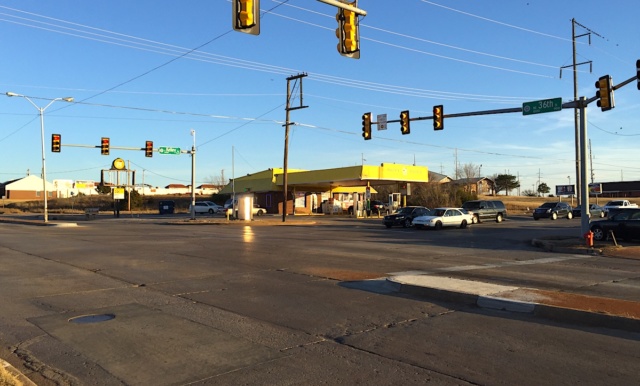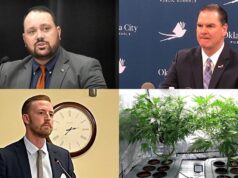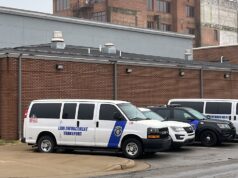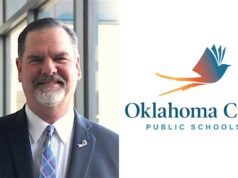
I must say upfront that this is one of the most unremittingly depressing things that I have written.
The mere repetition of the statistics below can be discouraging and counterproductive, but we must face these facts before we can significantly improve education outcomes for the Oklahoma City area. (The first step must include high-quality early education as well as early interventions for health problems.)
The data that follow come from the Lynn Institute’s study of demographics in three northeast Oklahoma City ZIP codes: 73105, 73111 and 73117.
Lynn CEO Karen Waddell presented the information during the 2016 Oklahoma KIDS Count conference this past fall.
I sure hope the upcoming OKCPS Northeast Task Force studies the report carefully.
Demographic statistics
Age
The median age in near-northeast ZIP codes ranges from 38 to 42. The aging population is evidence of a failure to invest in those areas and an inability to provide opportunities that attract young families.
Poverty
In two of the three ZIP codes, the median family income is less than half the Oklahoma County median income.
In 73117, 42 percent of residents live in poverty, and an astounding 22 percent live in extreme poverty (50 percent of the poverty rate). Both figures are more than twice the county rate. Almost 69 percent of children below the age of 5 live in poverty.
Similarly, in 73111, more than one-third of the residents live in poverty. Nearly two-thirds of young people are poor, and nearly three-fourths of children below the age of 5 live in poverty.
Child care
Despite Oklahoma’s reputation for offering preschool for all 4-year-olds, between half and two-thirds of young children in northeast Oklahoma City are not in preschool. There are 76 licensed child-care centers/homes with a capacity for 2,071 children in the area, but only 44 percent have a rating of two stars (on a descending rating scale starting with 3, 2, 1+ and 1) and less than 8 percent have a rating of three stars.
Part of the problem may be that almost 60 percent of the child care is in homes, not centers.
Physical health
The 73117 hypertension mortality rate is five and a-half times as great as the national rate, and the ZIP code has a stroke mortality rate which is double that of the U.S. This ZIP code has seven institutions that produce significant to major emissions and has the area’s highest rates of respiratory illness. Its “brownfields” are subject to chemical runoff.
Similarly, the 73111 cardiovascular mortality rate of 433.2 per 100,000 persons is nearly 200 points worse that the national rate.
Mental health
In these three ZIP codes, mental health visits are eight times higher and drug treatment visits are about five times higher than in Oklahoma County. As is true in Oklahoma County and across the nation, the percentage of persons wrestling with depression is surprisingly high, but it is a much smaller percentage of patients (with more than one-fourth dealing with depression) who face extreme and chronic conditions.
I understand that the following numbers are due to a complex set of dynamics, but consider this: The three ZIP codes report less than 4,000 mental health patients in 2012 but about 130,000 mental health visits.
Death
In northeast OKC, infant mortality is up to three times greater than the rest of Oklahoma. In the 73105 ZIP code it’s four times the U.S. rate.
Moreover, the suicide rate is more than double the rest of Oklahoma and the nation, and crime is disproportionately high, with gun-related violence five times the rate of Oklahoma County. The 73117 murder rate is 17 times greater than the U.S. rate. Its gun mortality rate is nearly 37 times the national rate.
It is hard to estimate the years of potential life that are lost due to premature death. The estimate for the years from 2011 to 2013 in the three ZIP codes indicates that 16,921 years were lost (by not aging to 75) compared to 9,150 years lost for Oklahoma County on average. Despite this health crisis, 86 percent of the polled residents say that they use the ER for “regular” health care, and, in two of the three ZIP codes, patients visit the ER at twice the rate for the county.
‘Ghosts in the nursery’
Yes, the Lynn Institute’s ZIP code study is correct in its conclusion:
The biggest assets are Northeast Oklahoma City residents themselves. Despite multiple adversities and a long history of institutionalized racism, the people of Northeast Oklahoma City exhibit cohesiveness and pride in their community.
At the same time, we must also face up to some terrible statistics and put them in a historical perspective.
As explained at the Tulsa conference, we can’t provide better opportunities for many disadvantaged young people until we face up to the “ghosts in the nursery,” i.e. the legacies of our brutal past.





















